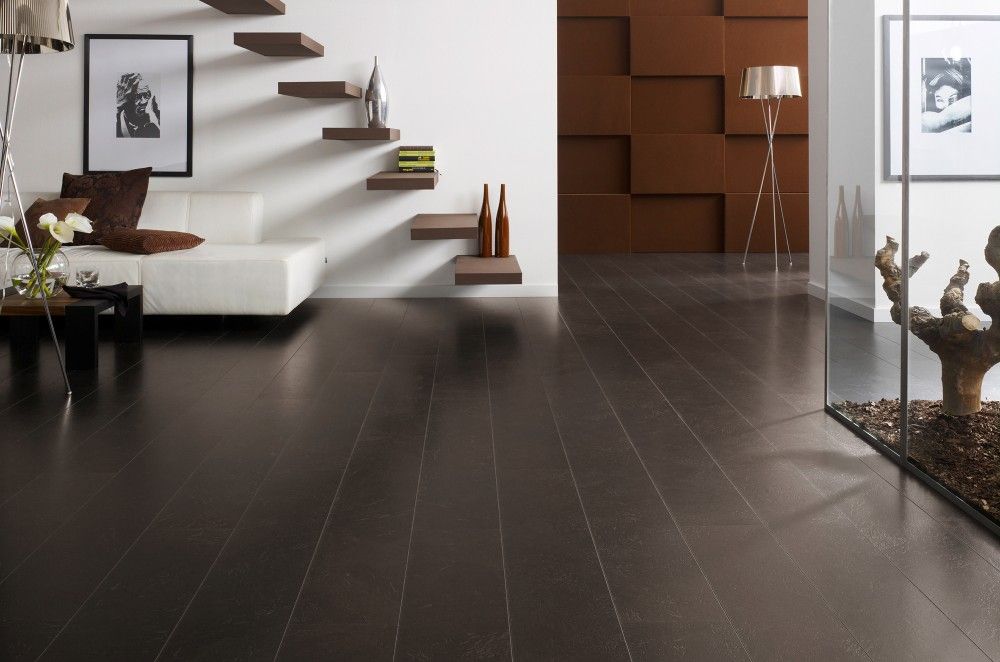Fumbling between the choice of heterogeneous sheet vinyl and homogeneous vinyl flooring?
No worries. This guide explains the different aspects of both flooring so read on and make the right choice for your space.
Introduction

The first step inside any space and probably the first thing you notice is the flooring. While many may not do it consciously, they are still feeling the space based on the flooring. Good quality and attractive flooring impresses the audience immediately and makes them want to visit the place often.
The topmost prominent floorings are heterogeneous vinyl flooring and homogeneous vinyl flooring. Whether you are decorating your home or commercial space, these two options are greatly favored among interior designers.
While the other types of flooring all have their admirers, vinyl flooring takes the front seat. So, let’s get to know vinyl flooring first.
What is Vinyl Flooring?
Vinyl flooring is a type of flooring that is made from PVC and is usually produced by mixing polyvinyl chloride and its copolymer resin as the main raw material. There are two types of vinyl flooring; homogeneous sheet vinyl and heterogeneous sheet vinyl.
They are both highly used by flooring companies and interior designers. These floorings are not only aesthetically pleasing to the eyes but also very functional and robust.
What is Homogeneous Vinyl Flooring?
The word ‘Homogeneous’ is quite self-explanatory which means something uniform on every level. Homogeneous vinyl flooring is a type of flooring that is made up of one material from the surface to the top.
This type of flooring provides a consistent look throughout the whole design. However homogeneous flooring is restricted in design and colors as it uses a single material for the whole flooring.
What is Heterogeneous Vinyl Flooring?
Heterogeneous flooring is a multi-layer structure that includes but is not limited to 4 to 5 layers. This type of flooring can include a printing layer, glass fiber layer, wear layer, etc. By using different materials in the heterogeneous vinyl flooring, the flooring becomes more diverse.
Heterogeneous sheet vinyl is comparatively less expensive than homogeneous vinyl flooring but less durable. This type of vinyl flooring uses different raw materials throughout the flooring to make it more attractive.
The wear resistance of heterogeneous vinyl flooring lies mainly in the wear layer. The stronger the wear layer is, the wear resistance of the heterogeneous flooring will be equally stronger.
The Difference Between Homogeneous and Heterogeneous Vinyl Sheet Flooring
Both homogeneous and heterogeneous vinyl floorings have their benefits that can enrich the look of the whole space. But they have some major differences that set them apart from each other.
Let’s take a look at those differences.
1. Difference in Wear Resistance
If we talk about the longevity and wear resistance of the two vinyl floorings, they are both quite good. Since vinyl flooring uses a top layer which is a special transparent wear-resistant layer processed by high technology on the surface of vinyl flooring, this makes both flooring strong.
However homogeneous vinyl flooring is undoubtedly more durable and wear-resistant than heterogeneous vinyl flooring because it uses the same material from top to bottom. Due to this, the homogeneous vinyl flooring so it is strong from the foundation.
Homogeneous vinyl flooring is thicker and lasts longer than heterogeneous vinyl flooring.
2. Differences in Colors/Patterns or Customization
Homogeneous vinyl flooring only uses directional or non-directional patterns. You can choose from a diverse variety of colors, prints, or designs but it is a single choice since you can only use a sole design.
On the other hand, heterogeneous vinyl flooring allows you plenty of options to choose from as you can opt for different colors, prints, or designs for the whole flooring. The entire flooring structure looks aesthetically pleasing as it includes different designs and colors from top to bottom.
Heterogeneous vinyl flooring is more attractive and customizable than homogeneous vinyl flooring. This gives interior designers the freedom to be more creative in their choices.
3. Difference in Structure
The structure is greatly different for both homogeneous and heterogeneous vinyl flooring. The heterogeneous vinyl flooring uses different materials from top to bottom in the structure so it is not only appealing but also has variety.
There are several different layers in heterogeneous flooring including, the wear layer, UV layer, glass-fiber layer, printed layer, backing layer, foamed layer, etc.
While homogeneous vinyl flooring only uses a single material in its structure. It includes the same type of raw materials in the whole flooring structure. It is a single-layer flooring. Homogeneous vinyl flooring also has a good thickness that caters to its durability.
4. Difference in Fire Resistance
Vinyl flooring is one of the most powerful flooring and the two types of flooring, homogeneous and heterogeneous vinyl flooring are also strong. However as homogeneous vinyl flooring is made completely from a single material, it is more robust in comparison to heterogeneous vinyl flooring.
Homogeneous flooring is bound to perform well under any fire hazard and can withstand different types of pressures.
5. Differences in Sound Absorption & Noise Reduction
Vinyl flooring handles sound absorption well and works great in different situations to reduce noise. Heterogeneous vinyl flooring can absorb sound and insulate it. It can also isolate 15db-19 db noise etc. This is better than homogeneous vinyl flooring because it has a backing layer, foamed layer, glass-fiber layer, etc.
6. Indentation Resistance
In comparison to heterogeneous vinyl flooring, homogeneous vinyl flooring has better indentation resistance. The homogeneous vinyl flooring uses a higher stone powder content that makes it more resistant to any indentations and damage.
Homogeneous vinyl flooring is more likely to resist indents as they are built on a powerful foundation. It is made to withstand the weight of heavy furniture and even high foot traffic. For commercial or residential spaces, homogeneous vinyl flooring can be an ideal choice.
7. Repair Performance
Homogeneous vinyl floorings benefit a lot from using only a single layer. This makes for a great function for refurbishing as slight scratches and indents can easily be dealt with a grinder.
You can effortlessly polish, repair, and rewax homogeneous vinyl flooring and they will be as good as new.
Heterogeneous vinyl flooring is harder to repair because it has different layers that can be completely removed during the repairing process if the indent is deeper.
8. Cost Difference
Vinyl flooring in Dubai is cheaper in comparison to other types of flooring such as stone, wood, ceramic, bamboo, etc. But between homogeneous and heterogeneous vinyl flooring, homogeneous is more expensive than heterogeneous.
The reason behind this can be that homogeneous flooring requires a strong foundation that can hold more weight easily.
The Final Word

Choosing vinyl flooring depends entirely on the type of space you have and your requirements. They both are good if they are used in the right way and the right place. If you want powerful resistance, attractive designs, and strong sound absorption, heterogeneous vinyl flooring is a good choice. But if you are looking for easy maintenance, high fire resistance, and lasting durability, homogeneous vinyl flooring should be your choice.
FAQs (Frequently Asked Questions)
Q1. How thick is vinyl flooring?
Vinyl flooring thickness can vary from 2mm to 8mm and more depending on the foot traffic it is going to receive.
Q2. How do the Installation processes of homogeneous and heterogeneous vinyl flooring differ?
Homogeneous vinyl flooring is installed through the use of full-spread adhesive while heterogeneous vinyl flooring can be installed using a loose-lay or full-spread adhesive.
Q3. What are the design options available for each type?
Homogeneous vinyl flooring comes with limited options of solid colors and patterns. On the other hand, heterogeneous vinyl flooring offers a wide variety of design options for tile patterns, stone, and wood.
Q4. Which type is more resistant to wear and tear?
Homogeneous and heterogeneous vinyl flooring both have great resistance. However, the particular wear resistance depends upon the quality and thickness of the wear layer.
Q5. Between homogeneous and heterogeneous vinyl flooring, which type is easier to maintain and clean?
Homogeneous vinyl flooring is easier to maintain and clean as it has no seams for dirt and moisture to enter.




